Sacred
Numbers, Silent Mind: Consciousness as the Primordial Code
Human minds have long sought answers to
questions about truth, consciousness, and divinity. These three profound
realities have captivated the minds of philosophers, scientists, and meditators
throughout the centuries. The ancient Vedic scholars sought
non-duality, the ultimate essence of Brahman, the indivisible reality of Truth,
Consciousness, and Divinity.
This post begins with a personal
conclusion shaped by years of reflection and study: that truth is not
singular in its approach, but singular in its essence. Whether approached
through philosophical reasoning, scientific evidence, practical experience, or
mystical insight, truth ultimately leads to one unified realization. Inspired
by this understanding, I express it as follows:
The truth has many roots, yet one trunk and many branches. Every tree follows the same growth
principle, with roots securing it, a trunk supporting it, and branches
sprouting from its seed. Similarly, our understanding of truth, consciousness,
and divinity is also evolving. There are many branches of expression arising
from these different roots of inquiry, but they all lead to the same trunk of
awareness.In this posting, I shift the focus from
truth to consciousness, the silent witness behind thought,
perception, and existence itself. Here, I explore the idea that:
"Consciousness has many roots, yet one trunk and many branches."
Taking this perspective, consciousness
is not simply a mental or spiritual phenomenon, but a fabric from which
numbers, patterns, and even mathematics are derived. This allows us to
understand the profound statement of the Upanishads:
"That which is Truth, that which is Consciousness, and that which is
Divinity—Brahman."
This powerful metaphor reframes
the age-old image of the Tree of Truth, now revealing consciousness (Chit)
as the underlying essence from which all diversity of thought, knowledge, and
expression arises. Through its lens, mathematicians and thinkers have been
guided by the realization that consciousness is not a byproduct of
matter but the basis of all being.
A mathematical model of consciousness
Ancient
philosophers, including Thales, Anaxagoras, and Plotinus,
as well as later thinkers such as Leibniz and William James,
contemplated consciousness as a universal principle. This worldview, known as panpsychism,
posits that consciousness may be a fundamental attribute of all matter, even in
plants, atoms, and particles.
There is
a revival of ancient intuition in modern science. Integrated Information
Theory (IIT) presents a groundbreaking framework: consciousness arises not
as a side effect of biology, but from the integration of information within
a system, measured through a quantity called Φ (phi). This aligns
closely with the idea that:
Existence
and numbers are based on consciousness.
Even quantum
theories of consciousness, such as Orchestrated Objective Reduction
(Orch-OR) by Roger Penrose and Stuart Hameroff, suggest that
consciousness may emerge from quantum processes within the brain, offering a
potential convergence between physics and subjective awareness.
Though
controversial, these ideas hint at a profound possibility: mathematics is
not the language of a lifeless universe, but a mirror of living consciousness
expressing itself in structured forms.
Consciousness and the birth of mathematics
In
ancient traditions, especially within Hinduism, the five elements Prithvi
(Earth), Jala (Water), Agni (Fire), Vayu (Air), and Akasha
(Aether) formed the building blocks of nature. These elements were not seen as
material elements, but as manifestations of consciousness itself.
Through observing patterns in these elements, the early sages discerned order,
rhythm, and balance, giving rise to the first forms of sacred mathematics.
The basis
of mathematics is consciousness expressing itself through patterns, symbols,
and structures.
Whether
it is the recurring Fibonacci sequence in flowers and galaxies, or the sacred
geometry found in temples and mandalas, numbers have never been separated from
divinity. They were a language of the formless, a silent speech through
which Chit revealed itself.
Sacred Numbers and Spiritual Insight
Sacred
numbers have guided spiritual understanding across cultures and faiths.
There are
108 beads in a mala, 108 movements of Shiva (Nataraja), and 108 astronomical
ratios between the Earth and the Sun in Hinduism. It symbolizes cosmic
completeness.
666 in
science: The carbon atom, the basis of all organic life, carries this
structure (6 protons, 6 neutrons, 6 electrons), showing the bridge between
esoteric knowledge and biochemical life.(6+6+6=18, 1+8= 9)
These are
not coincidences. They are reflections of a universal consciousness
projecting order into creation.
Consciousness Before Equations
Modern
science often explains the universe through mathematical models. But what if the
origin of mathematics was not external, but internal? What if consciousness
created the concept of numbers to make sense of itself?
Recent
developments in quantum physics support this view.
Quantum
computing does not operate in space-time, but in Hilbert space, a
purely mathematical realm (In direct analogy with n-dimensional Euclidean
space, Hilbert space is a vector space that has a natural inner product,
or dot product, to provide a distance function. Under this distance function,
it becomes a complete metric space; thus, it is an example of what
mathematicians call a complete inner product space.
As an
ancient Vedic concept, entanglement suggests a non-local, interconnected
universe.
It is
well known that scientific equations work, but few ask: Who solves them?
Observer consciousness remains a mystery that science often overlooks.
Thus, we
do not live in a universe governed by mathematics; we live in a universe where
mathematics is a reflection of consciousness's awareness of itself.
The Tree of Consciousness: A Living Metaphor
Let us
return to the metaphor of the tree.
· The roots:
Cultural, philosophical, and spiritual traditions across the world, Hinduism,
Islam, Christianity, and Paganism, seek to understand the divine.
· The trunk
represents consciousness (Chit), the unifying presence that holds the whole
of existence together.
In the branches,
we find mathematics, language, science, poetry, and art -- all ways in which
consciousness expresses its inner order.
· The fruit:
Technology, healing, understanding, and transformation that emerges from this
sacred tree.
Though
each culture touches a different branch, all are nourished by the same sap, the
living awareness that underlies everything.
Consciousness: The Original Mathematician
The final
realization, echoed by sages, quantum theorists, and introspective seekers
alike, is this: Mathematics is not the creator of consciousness.
Consciousness is the origin of mathematics.
When you
observe the spiral of a shell, the fractal pattern of a fern, or the symmetry
in music, it isn’t mathematics creating meaning; it is consciousness recognizing
itself in the world, mirrored through numbers.
To
understand mathematics without understanding consciousness is to mistake
reflection for a mirror.
Summation: Numbers as a Divine Language
Mathematics
is, at its core, a sacred language, a structured code that gives form to the
silent awareness underlying all existence. The more we explore its patterns,
the more we must also turn inwards, toward the source of all patterns.
The
ancients knew this. Today, mystics rediscover it. Now science can glimpse it:
Consciousness has many roots, yet
one trunk and many branches.
May the
trunk within us hold the unity of all knowledge and the presence of the divine
mathematician.
The
Harmony of Number 9: A Cosmic Function of Consciousness
In the
vast and intricate design of the cosmos, certain numbers echo with a recurring
harmony, transcending cultures, sciences, and spiritual systems. Among
them, the number 9 holds a uniquely mystical status,
especially in Indian astrology and Hindu philosophy. It is
seen as a symbol of completion but also as a gateway to higher
consciousness. Revealed as a perfected, divine number, 9 stands at the
culmination of the decimal system, the end of a cycle, and the beginning of
renewal.
From
ancient Indian scriptures to metaphysical interpretations of the cosmos, the
recurrence of 9 is astounding. The 108 Upanishads, the 18
chapters of both the Bhagavad Gita and the Mahabharata, the 18
major Puranas, and even the Japa mala with 108 beads, all are
reduced to 9 in numerology. The four Yugas, Kali, Dvapara, Treta, and Satya, not
only unfold for mathematically precise durations, but the sum of their digits
consistently returns to 9, hinting at a divine rhythm underlying cosmic time.
Beyond the
textual traditions, the human body is described as
having 9 gates, symbolizing the physical interface between the
inner and outer worlds. The Navagrahas (nine planets)
influence our karmic destiny, while the nine forms of Bhakti (devotion) offer
different paths to connecting with the divine. Navaratri, the nine nights of
worship dedicated to the Goddess and Durga, highlights the significance of this
number in spiritual transformation.
This
pattern involving the number 9 is not isolated to the Vedic scriptures.
In Western mysticism, the number 72, found across astronomy,
genetics, and sacred geometry, when reduced (7+2), returns to 9,
linking it back to the same cosmic rhythm The 72, year recessional shift
of the Earth’s axis, the 72 codons in DNA, and the 72
names of God in Kabbalah all hint at a shared harmonic foundation
where mathematics becomes a language of the universe, and 9
becomes its master key.So what
does this tell us about consciousness?
Consciousness,
often regarded as a subjective phenomenon, appears deeply mathematical
in structure. The repeated presence of 9 and its derived patterns
throughout the spiritual, biological, and astronomical systems suggests
that consciousness is not random—it is ordered, cyclical, and governed
by hidden laws encoded in numbers. From this perspective, mathematics is
more than a scientific tool; it is a sacred code, revealing the unified source
from which all spiritual and material
Thus, we
may conclude that consciousness has many roots, biological, cosmic, and
mystical, each contributing to its depth and complexity. Yet it grows from a
single trunk, expressed through the harmony of the number 9, extending into
cultures, beliefs, and sciences. The number 9, then, is more than arithmetic;
it is a portal to the deepest intelligence of the cosmos, reminding us that
everything, from atoms to galaxies to our souls, resonates with a unified, sacred
pattern.
Why the Tree Serves as a Metaphor for Consciousness
and Truth
As one of
nature's most powerful and universal symbols, trees beautifully illustrate
consciousness and truth. Like the tree, truth and consciousness arise from
unseen, fundamental roots deep within us and the universe. The roots are hidden
beneath the surface, but provide nourishment and stability in the depths.
A tree
trunk represents the unified core through which diverse roots channel their
essence. In the same way, traditions, philosophies, and experiences converge on
a unified understanding of being.
From the
trunk grow branches, spreading out in many directions, just as truth and
consciousness express themselves in countless forms: thoughts, actions,
cultures, sciences, and spiritual insights. Yet, despite this diversity, the
branches bear the same leaves, flowers, and fruit, symbolizing the
shared outcome of growth, realization, and wisdom.
Trees
capture the very structure of reality: many origins, one essence, many
expressions. That is why it serves as a timeless and living metaphor for
exploring and explaining the interconnected nature of truth, consciousness, and
divinity.
The Tree
of Truth: Nature’s Influence on Intellectual and Spiritual Thought Across Time
Seers,
sages, philosophers, and prophets have drawn inspiration from nature throughout
history. The tree, in particular, stands as one of the most universally revered
symbols, representing life, truth, divine order, and spiritual evolution. Its
roots dig deep into the earth, its branches reach upward toward the heavens,
and its trunk stands firm as the axis between the two realms. From the ancient
Vedic Rishis to the pagan mystics and Christian theologians, nature was never
merely a backdrop; it was divine scripture itself, written in wind, water, fire,
earth, and sky.
The Sacred Five: Nature’s Building Blocks in Hindu
Thought
Hinduism,
with its deep spiritual sensitivity to the environment, recognizes the world
not as a mechanical construct, but as a living, breathing organism composed of
Pancha Mahabhutas, the five elements:
· Prithvi
(Earth) is the element of stability and nourishment
· Apas
(Water), the force of flow, emotion, and purification
· Agni
(Fire), the energy of transformation and perception
· Vayu
(Air), the breath of life, motion, and communication
· Akasha
(Ether or Space), the subtle field where all things exist
These
five elements were not seen merely as material substances, but as essential
principles through which all of creation, including the human body and
consciousness, operates. Ancient thinkers correlated these elements to
understand not only the physical world but also the metaphysical, the formless
origin that gave rise to form. In this way, nature became the mirror through
which divinity could be glimpsed.
The Tree in the Bhagavad Gita: A Map of the Cosmos
The aśhvattha
tree mentioned in the Bhagavad Gita (B.G. 15.1–B.G. 15.4) is not
literal, but is a profound allegory of the material world, karma, and the
soul’s entanglement in illusion. With roots above, symbolizing its origin in
the spiritual realm, and branches below, representing its material extensions
nourished by the three gunas (modes of nature: sattva, rajas, and
tamas), this tree embodies the cycle of birth, action, and rebirth.
To the
seeker of truth, the Gita offers this wisdom: one must sever attachment (moha)
and illusion (maya), the tangled branches of worldly desire, using the
“axe of detachment.” Only then can one find the root, the Supreme Being (Purushottama), from
whom all creation flows.
This
tree, like all sacred trees in other traditions (Yggdrasil in Norse mythology,
the Tree of Life in Kabbalah, and the cross in Christianity), is the
interconnectedness of all things. The divine, far from being a distant force,
is embedded in every leaf, every breeze, and every flame. To understand the
world was to understand the divine.
The Pagan Reverence and the “Knock on the
Wood" Ritual
Pagans, those
who lived before the formation of organized religions, had an innate respect for
the forests, rivers, rocks, and skies. Their gods and goddesses were not
abstract beings but manifestations of natural forces. By knocking on wood, one
invokes the spirit within the tree, asks for protection, invokes presence, and
aligns oneself with nature.
This
ancient rite still echoes today, albeit in secular form, as a subconscious nod
to our ancestral understanding of nature’s sentient powers. When someone says
“knock on the wood" after voicing hope, they are unknowingly continuing a
spiritual practice born from reverence for the natural world.
Even in
Christianity, the wooden cross becomes a transformative tree, connecting
suffering with salvation, materiality with the eternal. The cross, like the
aśhvattha tree, becomes the site of transcendence.
Mushrooms, Plants, and Terraforming: Nature as a
Divine Process
Science
tells us that fungi and plants were the first organisms to terraform Earth,
creating breathable air, stable soil, and a life-supporting ecosystem. But for
ancient thinkers, this was more than biological; it was divine orchestration. A
cosmic intelligence flows through leaf veins, beneath the ground, and shapes
forests silently.
Simple
observations of fire being stored and sunlight released by burning wood came as
evidence of an interconnected truth. Nothing is separate; all three elements,
the Gunas and the divine will, are interwoven. Life was not built by random
chance but guided by a universal rhythm, a cosmic intelligence that could be
felt in the rising sun, the flowing rivers, or the rustling of leaves.
The Tree of Truth: A Universal Metaphor
Truth,
like a tree, has many roots, cultural, philosophical, and mystical, but it grows from
a single divine seed. Each tradition offers a branch, a perspective, a song of
understanding. Vedic sages meditated under trees, Buddha attained enlightenment
beneath the Bodhi tree, pagans worshipped in sacred groves, and Christian
saints often retreated to forests for contemplation.
This
shared symbol reminds us: all wisdom traditions, despite their differences,
spring from the same soil of spiritual inquiry, nourished by the same divine
rain.
By
honouring the natural world, not just as a resource but as a revelation,
intellectual and spiritual thinkers found a pathway to the divine. They did not
worship the tree as an idol, but as a living symbol of cosmic unity. In
silence, they heard the Creator's voice. Its branches reveal the universe's
structure. At their roots, they recognized the interconnectedness of all
beings.
Endnote: From Observation to
Illumination
Nature has always been the original
scripture, a sacred manuscript inscribed in the language of light, air, water,
fire, and space. The sages of old did not study nature; they engaged in a
living dialogue with it. They perceived divinity inside and mystery beyond each
element.
The tree is more than a biological being;
it is a spiritual symbol, a timeless archetype. There is only one source of
truth, despite its many manifestations. As long as we walk on this earth,
revering nature is to revere the divine that dwells within and surrounds us.
The sacred still whispers through the woods. Are we listening?
The science of trees reveals a profound
truth: nature’s dualities, light and dark, push and pull, positive and
negative, are not contradictions, but cooperative forces driving toward unity.
Just as roots seek gravity and branches reach for light, consciousness, too,
strives for oneness through apparent division. This dance of opposites contains
the silent code of creation, where energy, balance, and being unite to reveal a
single truth: all is one. The tree reminds us that consciousness is not a
by-product of nature; it is nature's goal.
Consciousness:
Duality and non-duality in nature and the cosmos
All
entities are conscious. To understand cosmic truth, consider the universe's
five realms: Space, which encompasses matter and energy, unfolds in a
time-varying structure, beginning with a singularity. When we replace
singularity with awareness, we realize that the only true, finite reality is
connected to everything else in the universe: consciousness or "chit"
as described in ancient Vedic literature.
The
universe is atomically organized, with electrons, neutrons, and protons
creating atoms. Quarks and leptons, the elementary particles that comprise
protons and neutrons, are fundamental to matter, being entirely made up of
energy with no constituent parts. Quarks and leptons are energetic particles
that move and oscillate. They exist in a quantum vacuum of energy.This
energy, consisting of electromagnetic fluctuations that fill space, shapes our
reality and underlies all mass and forces. At the core of all atoms and
everything in the universe lies pure energy, devoid of material substance,
forming us into energy vortices. The universe is composed of energy, reflecting
its complexity. The electromagnetic spectrum is a range of frequencies that
combine with electrons and protons, and at this level, everything behaves like
waves.
This
understanding reveals that people are more than just physical beings; we are
spiritual entities, and our creator is an energy-vibrating field. The
fundamental core of an atom represents everything in our universe, and there is
no material; it's just pure energy or energy vortices. You and I are the same
energy as everything else in the cosmos, connected and eternal.
The science of phototropism and
gravitationalism
Positive
gravitotropism (growing toward gravity) and negative phototropism (growing away
from light) are fascinating examples of duality in nature. The fundamental
characteristic of the manifest universe is that opposing forces interact and
balance each other to achieve a common goal, in this caseDualistic
tendencies in trees drive growth and progress. Car batteries require both
positive and negative terminals to generate energy. This duality reflects the
tree's innate essence, which aspires to singularity or unity (represented by
the flat battery).
In the
realm of non-duality, this singularity is the ultimate reality, beyond apparent
distinctions and contradictions. Trees reflect the interconnectedness of all
life as they grow and develop. Duality is a manifestation of this non-dual
reality, reminding us that opposing forces are intricately linked and
interdependent.
In this
view, the tree's negative phototropism and positive gravitropism are
complementary parts of its growth, expressing life's essential unity and
non-duality.
Non-duality
To exist,
creation inherently seeks singularity even though duality is fundamental.
Science has described the singularity in the context of black holes, but it
remains an elusive and imaginary concept. Atoms are neutral, with both positive
and negative charges.
This
singularity is a profound and crucial aspect of our universe. It implies that
all particles, including atoms and molecules, are indistinguishable and
interchangeable. In the natural world, we observe predictable behaviour and
order because every molecule of water is identical.
The
scientific analogy of positively and negatively polarized particles working
together to perform specific functions underlies all creation. Carbon and
hydrogen atoms contain the same number of electrons and protons, resulting in
electrical neutrality.
All
living and non-living entities in the universe, like batteries, require regular
charging to function properly. Universes are dualistic, containing positive and
negative forces that interact and coexist. Charges are maintained
proportionally through an inherent mechanism.
Science
analyses the universe under unchanging conditions, but quantum science reveals
its ever-changing nature. This dynamic environment mirrors consciousness,
constantly seeking oneness. Consciousness is the ultimate singularity that
drives all existence.
The tree
is a conscious entity
A small
pine tree growing in a glass box reveals a delicate web of white, finely
branched mycorrhizal threads, known as mycelium, clinging to its roots and
drawing nourishment from the plant.
These
mycorrhizal fungi develop symbiotic associations with plants, allowing them to
collect water and nutrients from the soil in exchange for sugars and other
chemicals.Throughout
ecosystems, this underground network is vital to plant growth and health.
Why
consciousness?
Many Vedanta and
Upanishad writers have a single idea: awareness. This singularity was the
result of mental reasoning and yoga practices. It was known as CHIT and had a
universal stimulus. Consciousness, rooted in the concept of
"chit," refers to the awareness of one’s thoughts, memories,
emotions, sensations, and surroundings.
Consciousness is the
singularity or non-duality that exists. It is energy that exists, also known as
the soul (Atman). Consciousness is not a contained entity; rather, it is an
energy-vibrating field that connects everything. Creator seeks singularity, the
ultimate reality of all existence.In this regard,
consciousness is not a by-product of the physical brain or body, but rather the
same fabric that gives rise to all experience. The universe and all of its
events are manifestations of unmanifest, unlimited potential. "Chit"
(consciousness) is the ultimate reality, the essence that drives all existence
and the source of creation.
The conclusion is that
God does not exist. It's an illusion. The soul (Atman) is a pervasive
stimulant. Finding a singularity is the Creator's work. In Sanatan Dharma, the
total energy in the universe is Paramatma, or the super soul. Consciousness
permeates everything, even though nothing is contained within it.

.jpg)
.jpg)
.png)
.jpg)
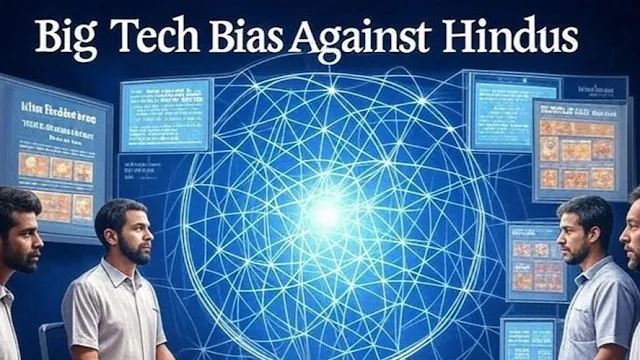




.jpg)




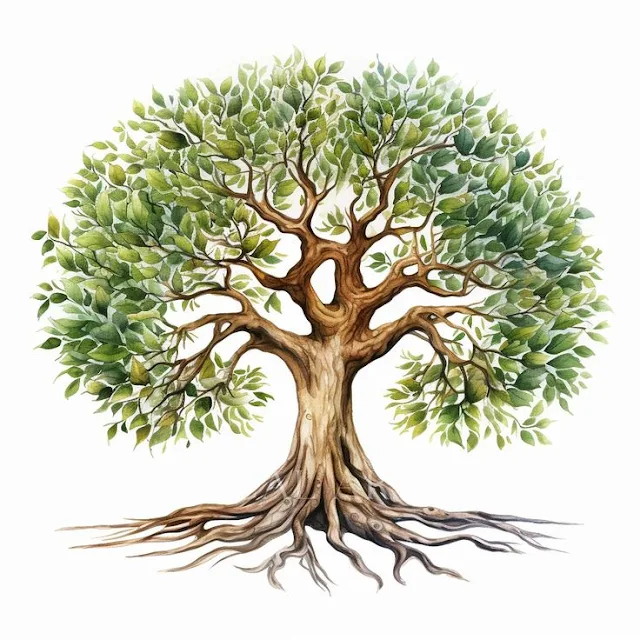



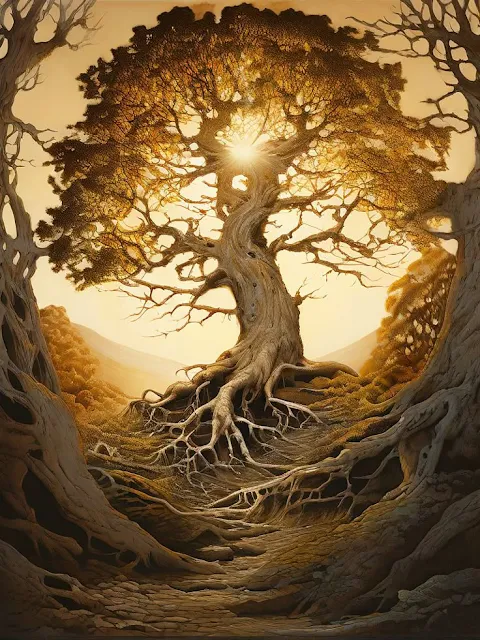
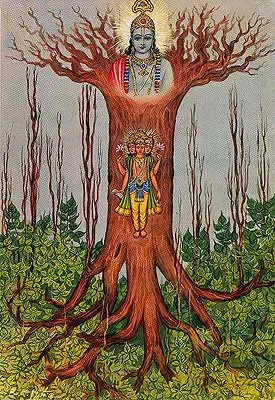


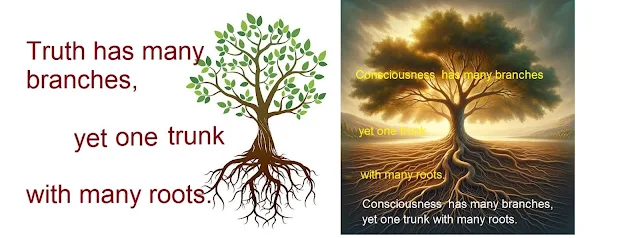




.png)



